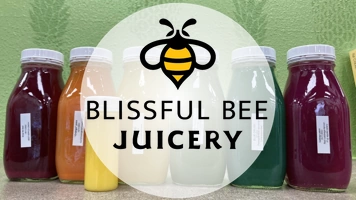“Just think, in a few months, this street will be covered with a canopy of green leaves,” my husband commented as we drove home.
I was looking at a precarious nest perched on a high, brown, leafless branch.
“That’s a daring squirrel to build a nest over a busy street,” I added.
On the following day, snow arrived. On a positive note, the environment looked white and clean.
I hoped that the extra moisture would make green grass blades appear. I can’t wait for colorful tulips to provide pops of color in our neighborhood.
April is National Garden Month. Like many others, I hope to get my hands dirty and plant some flowers and vegetables soon.
Gardening has many health benefits. Hoeing, weeding and raking all provide physical activity.
Those of us in cold climates have been doing our best to avoid exposing our skin to the winter cold. Now, we can naturally restore our body’s vitamin D levels by just 10 to 15 minutes of daily sunlight on our arms as we work in nature.
Don’t go overboard with sun exposure and get a sunburn. Too much sun can promote the development of skin cancer. May is Melanoma Awareness Month, by the way.
When we get out in nature and turn our attention away from other issues in our lives, we may feel less stressed. April is Stress Awareness Month, too.
Too much stress can prompt us to avoid healthy lifestyle practices. For example, stressed people may not eat a nutritious diet, forgo physical activity and may even forget to take their prescribed medications.
In honor of the colorful transitions in nature, let’s try a few questions about food and color. These are all foods that grow well in Midwestern gardens, and soon, we will be able to enjoy outdoor adventures and perhaps plant a few things.
- What is the name of the orange-red pigment linked to helping reduce the risk of various types of cancer?
- What are two foods that are especially good sources of the pigment in question 1?
- Orange-fleshed squash and carrots are excellent sources of carotenoid pigments that may help prevent cancer and heart disease. What vitamin is made by our bodies from carotenoid pigments?
- Leafy green vegetables are among the first to pop up in our gardens. What is the name of the natural plant pigment that provides color to leafy greens?
- Leafy greens contain lutein, which is helpful for our eyes. What are two eye diseases that can be at least partly prevented by eating enough leafy greens, peas, cucumbers, corn, red peppers and other vegetables?
- Anthocyanins are natural blue pigments found in blueberries, grapes and flowers, and they also can appear red in other fruits, vegetables and flowers. Blueberries have been linked with improving or maintaining a specific brain function. What function is it?
- White-fleshed vegetables and fruits are usually colored by pigments called “anthoxanthins.” What mineral is especially abundant in potatoes?
- Consuming at least 4 ½ cups of vegetables and fruits is recommended. What are three strategies to meet this goal?
Here are the answers: 1) lycopene; 2) tomatoes and watermelon; 3) vitamin A; 4) chlorophyll; 5) macular degeneration and cataracts; 6) maintaining memory or cognition function; 7) potassium; 8) eat fruit for a snack or dessert, have a side salad with lunch, order veggies on pizza and sandwiches, add extra vegetables to soups and casseroles, prepare a smoothie for breakfast, pack fresh or dried fruit for snacks.
This is an interesting take on a smoothie. Use your favorite fruits and toppings and place your masterpiece in a bowl for a colorful breakfast or snack.
Smoothie Bowls
½ cup spinach
½ cup vanilla Greek yogurt
1½ cups frozen fruit
2 tablespoons toppings (fresh fruit, granola, coconut, chia seeds, etc.)
Add spinach, yogurt and fruit to a blender or food processor. Blend until smooth. Pour the smoothie in a bowl and top with desired toppings.
Makes two servings. Each serving has 110 calories, 2.5 grams (g) fat, 7 g protein, 19 g carbohydrate, 5 g fiber and 40 milligrams sodium.
(Julie Garden-Robinson, Ph.D., R.D., L.R.D., is a North Dakota State University Extension food and nutrition specialist and professor in the Department of Health, Nutrition and Exercise Sciences.)




